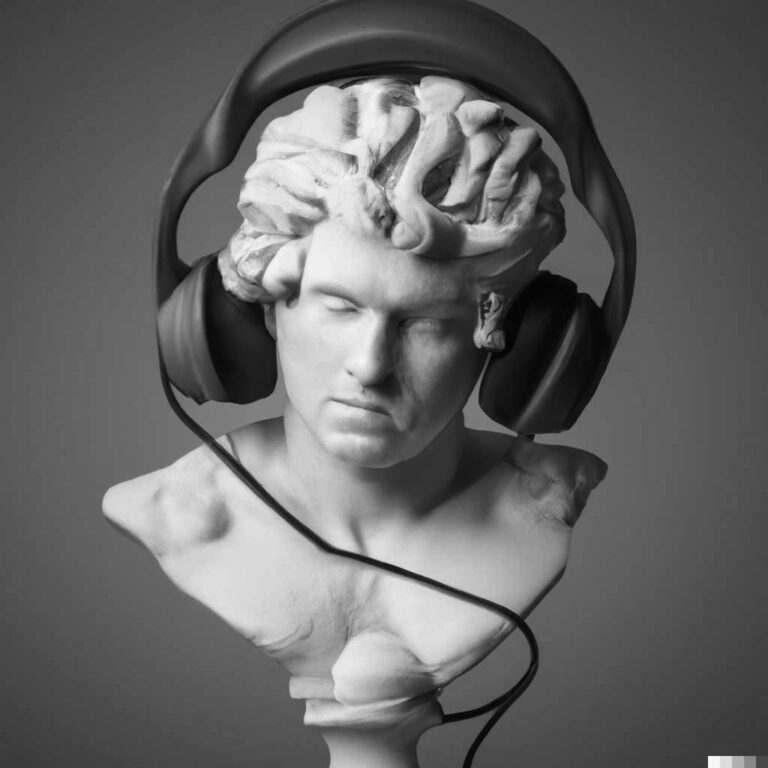These 8 design disciplines help differentiate products.
Which design disciplines bring which advantages? 8 design disciplines to help you differentiate yourself in the market.
Branding: The foundation of a brand’s identity.
The concept of branding, or using a name, symbol, or design to identify a product or business, has existed for thousands of years. Even farmers “branded” their cattle and marked their handmade goods.
Branding, as we know it today from advertising and marketing, emerged in the late 19th and early 20th century. With the advent of mass production, companies began using brands to differentiate their products from their competitors.
Branding has also evolved with time and the development of digital technologies, social media and other tools and is now more complex and sophisticated than ever before. Using branding helps companies create a distinctive visual identity and forms the basis for differentiating themselves from the competition and building a stronger bond with customers.
Product Design: Creates desirable products.
The process of developing new products has been around since ancient times. People have been designing tools, weapons and other objects for thousands of years. Like branding, product design as we know it today dates back to the late 19th and early 20th centuries.
The Industrial Revolution brought about mass production and mechanization, and industrial design, engineering, and other disciplines emerged. In the 20th century, introducing new technologies such as computers changed our production processes.
The Industrial Revolution brought about mass production and mechanization, and out of this came industrial design, engineering, and other disciplines. Likewise, in the 20th century, introducing new technologies such as computers changed our production processes.
User Experience Design: Makes things user-friendly.
A recent development is the formalization and professionalization of UX design as an independent design discipline. User experience was often an afterthought in the early days of computing. However, as digital technologies became increasingly important in everyday life, the user experience became increasingly important.
In the early 2000s, user experience became known as UX design. The rise of mobile technologies has further increased the importance of UX design. With the growing importance of digital channels for businesses, UX design has become a crucial element of digital marketing strategies. Well-done UX design can make a company’s product or service more user-friendly, accessible, and enjoyable for customers. This can help create a competitive advantage over the competition.
Packaging Design: Increases the conspicuousness of products.
For centuries, people have used natural materials such as leaves, bark, and animal skins to protect and transport goods. However, the modern packaging design concept began to develop in the 19th century. Like product design, mass production created a significantly increased need for packaging. In addition, transportation and storage made new demands.
In the mid-20th century, packaging design became more sophisticated with the introduction of graphic design elements and new printing technologies. Today, brand communication focuses on environmentally friendly materials and sustainability, as well as interactive technologies, and can thus achieve that others purchase products on shelves and e-commerce platforms.
Graphic Design: Creates appealing communication.
Early examples of graphic design can be found in cave paintings, hieroglyphics, and other forms of ancient art. In the 20th century, graphic design evolved with the advent of new technologies such as photography, television, and the computer. This led to the development of new forms of Graphic Design such as Digital Design, Multimedia Design and Interactive Design.
Graphic Design is a powerful tool to set a business or organization apart by creating effective marketing and communication materials that meet the needs and preferences of its customers.
Service Design: Understands customer preference
In the past, service design was often an afterthought focused on technical feasibility and functionality. However, beginning in the 1980s, the field of service design began to evolve, seeking to understand and improve customer service experience.
The rise of a service-based economy led to the recognition of service design as a design discipline in its own right by the 2000s. This led to an explosion in importance due to emerging service innovation, i.e. service development and its significance for service marketing strategies. Today, a well-designed service “experience” can create a memorable experience for customers, setting a company apart from the competition.
Environmental Design: creates innovative spatial experiences.
Beginning in the late 1970s, Environmental Design became increasingly important as a discipline in its own right. Environmental Design has become a critical element for product development, architecture, urban planning and infrastructure design.
Sustainability plays a crucial factor in environmental design, whether physical or digital. Unique and memorable experiences help companies to be remembered by customers and thus help them to stand out from the competition.
Design management: working together not individually.
When creating differentiation in the market, all of the above design disciplines go hand in hand. This does not mean that every discipline must also be applied. No, it simply means that the fields are interconnected. An investment in one area has benefits and consequences for another.
But since design and its disciplines, today often function very specialised; another one comes into play for your networking—Design Management.
Design management has existed since the mid-20th century. In the 1960s, companies began to manage the design process better. This evolved into a wide range of strategies, tools and techniques for managing design within an organization.
Today, design management enables improved collaboration between design and non-design teams, efficient design processes, and better innovation and competitiveness in the marketplace.


